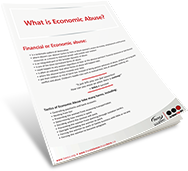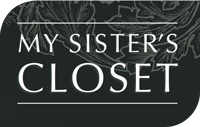What Kind of Economy Ends Violence? Rethinking Safety, Care, and Public Policy in Canada
By Angela Marie MacDougall
As Canada approaches a federal election in the midst of growing uncertainty—from a worsening affordability crisis to escalating trade tensions with the United States—there is an urgent need to interrogate the economic assumptions shaping public policy. While debates focus on jobs, budgets, and competitiveness, there is far less conversation about the underlying ideology guiding these conversations. The general, the ideology guiding economic policy, is rooted in market supremacy, privatization, deregulation, and reduced public spending, continues to dominate policy across party lines and levels of government.
Even as its promises remain unfulfilled, notions of the economy persists through a set of widely accepted myths. These myths are presented as common sense, yet they obscure the real costs to individuals and communities, particularly to women, gender-diverse people, and those already navigating marginalization and violence. Understanding these myths, and how they directly connect to the realities of gender-based violence and violence against women, is essential in shaping a just economic and social future for Canada.
The first myth is that lower taxes help everyone. In practice, tax cuts primarily benefit corporations and high-income earners, while eroding the public services that everyday people rely on. When governments reduce their fiscal capacity through tax cuts, survivors of violence pay the price in the form of fewer shelters, longer wait times for counselling, inaccessible legal aid, and a diminished safety net.
The second myth is that privatization leads to efficiency. In truth, privatized services are often more expensive, less accessible, and less accountable. This is especially harmful in sectors tied to safety and survival. When long-term care, mental health services, or housing are left to the private market, care becomes conditional on profit—leaving those in crisis with few or no options.
Austerity and balanced budgets are often framed as responsible governance. Yet history shows us that austerity disproportionately harms the very populations most in need of public investment. When services are cut in the name of fiscal discipline, women, and gender-diverse people—especially those fleeing violence—are left with impossible choices. Balancing budgets by underfunding women’s shelters, legal aid, or income supports is not responsible. It is abandonment.
Another myth is that free trade benefits everyone. In reality, trade agreements often empower multinational corporations while displacing local industries, weakening labour protections, and making it harder for governments to enforce environmental and human rights standards. In the current context, as Canada faces real tariffs and economic threats from the U.S., these dynamics are only intensifying. The impacts are not just economic; they are personal. When wages fall and communities lose good jobs, stress and insecurity rise. Violence often follows. Economic instability is a risk factor for GBV, and economic disempowerment is a barrier to leaving it.
We are also told that the market will solve the housing crisis. But the housing market is not designed to provide homes—it is designed to generate profit. That profit model has made safe, affordable housing increasingly inaccessible, especially for women, racialized communities, and survivors of violence. Without stable housing, fleeing abuse becomes nearly impossible. Market-based solutions have failed. The evidence is in the overcrowded shelters, the rising homelessness among women, and the impossible waitlists for second-stage housing.
Finally, this ideology aka neoliberalism tells us that success is a matter of personal responsibility. But structural violence cannot be outworked or out planned. Gender-based violence is not the result of poor choices; it is the result of a society that normalizes inequality, disinvestment, and harm. The myth of personal responsibility serves to silence survivors, erase structural causes, and justify inaction.
These myths not only mask the failures of the current economic policy—they deepen and normalize the conditions that allow gender-based violence to persist. They discredit public care while valorizing private profit. They frame survival as a matter of choice while making real safety unaffordable or unavailable.
In the Canadian context, this means we must recognize five clear links between economic policy and violence. First, underfunding social services directly limits options for those fleeing violence. Second, the precarity of work created by deregulated labour markets traps people in unsafe conditions. Third, housing policy rooted in market speculation denies survivors the stability they need to rebuild. Fourth myth, carceral responses are funded while prevention, healing, and community-led supports are starved. Fifth, colonial and racialized economic structures continue to deny Indigenous women and communities the resources and sovereignty required for safety.
As Canadians cast their votes in a time of rising uncertainty—faced with international threats, internal instability, and a cost-of-living crisis—it is essential to ask whose version of economic security we are defending. What does “Canada first” mean when our policies prioritize markets over people, and capital over care? Gender-based violence does not exist in isolation. It is shaped and sustained by the same policies that are now being repackaged as solutions.
The choice before us is not only about leadership. It is about the kind of economy we believe is possible. One that rewards extraction, privatization, and inequality—or one that invests in care, housing, healing, and collective safety.
That choice is not rhetorical. It is structural. And it matters more than ever.





